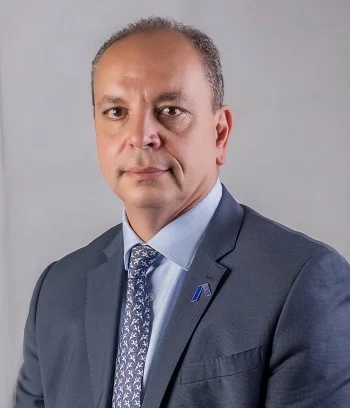Sameh Shenouda, executive director & chief investment officer at Africa Finance Corporation (AFC), discusses perceived risks around mining projects, keeping value within the continent and being a catalyst for change
In 2024, there is little need to rehash the staggering potential of Africa’s mining industry. Aside from the bedrock of traditional resources such as diamonds, iron, and gold, the eyes of the world have been drawn to the bountiful reserves of critical minerals that lie beneath the soils of most African nations and could prove instrumental in the delivery of the evolving energy transition.
However, while investment into projects and related infrastructure to realise the true value of the continent is increasing, it is not quite matching up to the excitement and interest it is receiving. This was a point made by Shenouda at the Investing in African Mining Indaba conference earlier this year where the AFC executive director and chief investment officer noted that while 30% of the world’s minerals are in Africa, less than 5% of global development funding is investing in projects on the continent. It has, therefore, become a primary focus of mining stakeholders to identify, discuss and overcome the obstacles standing in the way of investment and to de-risk projects so that they receive the funding required.
Delving into this conundrum in greater detail, Shenouda explained to African Review, “There are quite a few risks which can give investors cold feet. Political risk is one, currency risk is another, the infrastructure around the mining project is often quite a big concern. These raise questions such as what is the evacuation plan? Is there enough access to energy? Is there accessibility to bring machinery in? How comprehensive is local port infrastructure? Generally, is the regulatory framework supportive of concessions etc.? However, in any project, there is a risk perception and then there is the real risk.”
Understanding investment risk
Understanding this difference is critical and, for international companies more removed from the continent, the former can seem more formidable when, in reality, this is not the case. “The risk perception of any investor if they are not close to the ground, if they don't understand the landscape well and if they don't understand the challenges in the countries, is higher than the real risk. Obviously, banks that are local and on the ground – that have a presence, relationships and understand the hurdles better – will be able to assess these risks more accurately and often have more of an appetite to invest in projects as a result.”
However, Shenouda was keen to stress, this does not mean that international organisations are unwilling to invest. “International banks are more comfortable with the larger companies, so they are often happy to follow their clients wherever they are. International banks also tend to come in when they have worked with other regional players or pan-African players such as AFC. When we invest in a project that gives comfort to other banks, whether local or international, to come alongside us. They know that we have a process to vet the project, we have gone through rigorous due diligence and, based on that, have the confidence to invest as well.”
Discover the full interview in the latest issue of African Review: https://africanreview.com/magazines/atr_2024_04_30/mobile/?page=29




